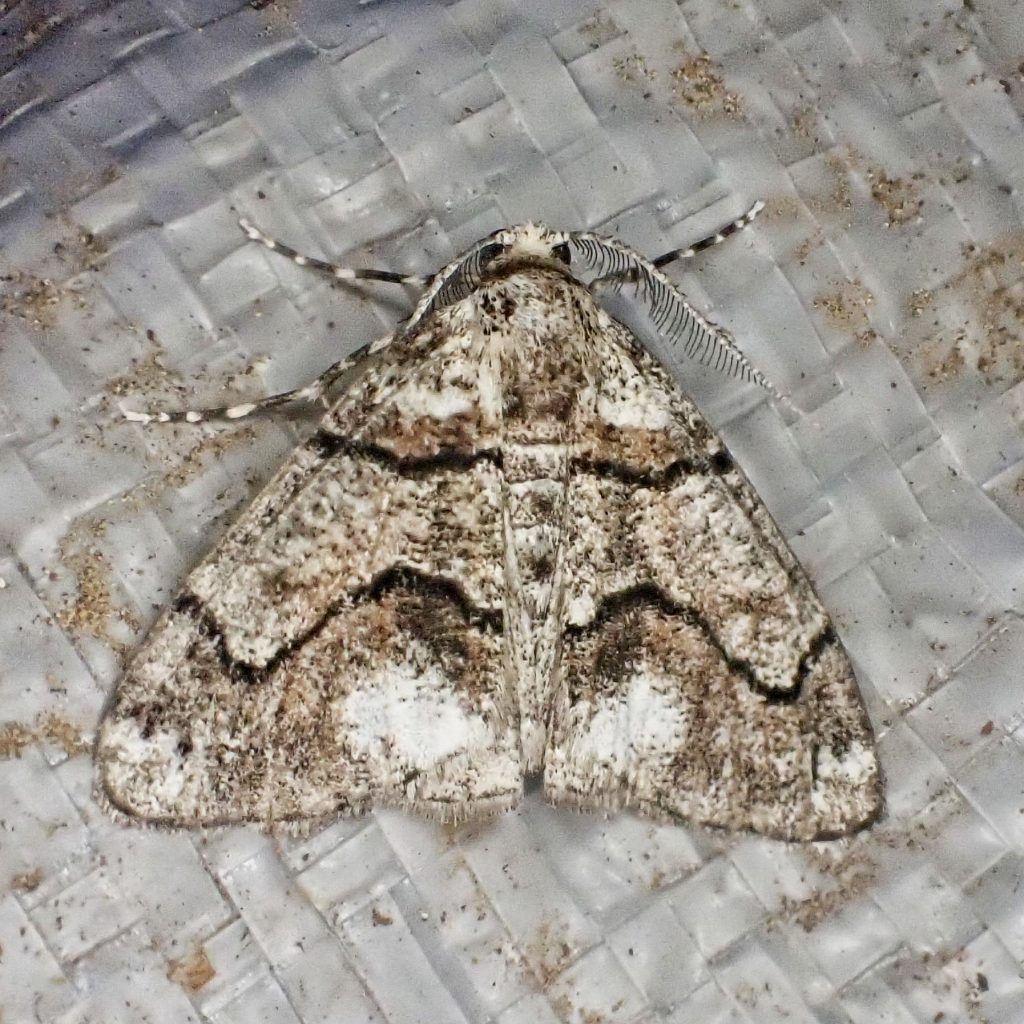
Those of you who read the ‘eaten by’ section of these profiles may have noticed that Gabriola dyari has been in every one of the conifer profiles, except the Pacific Yew. These handsome geometers are an equal opportunity consumer of conifer needles, although the majority of records are from Doug-fir and Western Hemlock, which probably has more to do with where observers are than with where the bugs are. They don’t have the numbers to be considered a pest species, and the Natural Resources Canada website refers to them as an “innocuous solitary defoliator.”
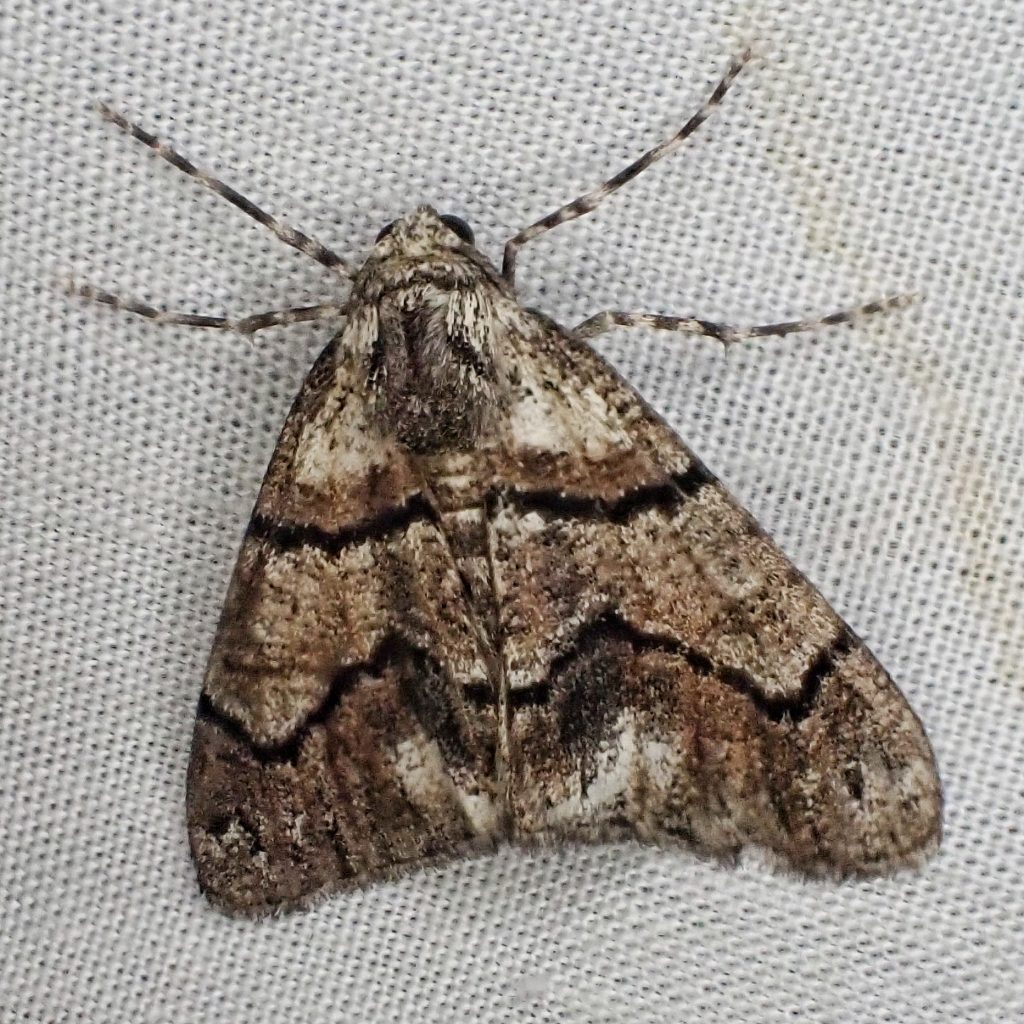
These moths are common denizens of late summer forests, and running lights in August and September in any coniferous forest I’m bound to get some, or even several. Though they seem striking against the backdrop of a white sheet, I would imagine that the variations of grey, diffuse white, lichenish forewing patches, and bold transverse lines, would offer good camouflage against the bark of most conifers. The larvae are said to resemble bird droppings, and that same Natural Resources Canada website has a good illustration of that.

Description-Medium sized (fw length 12-14mm) grey geometrid moth, with diffuse white patches near the end of the forewing, and (usually) diffuse white patches near the base of the forewing; bold transverse lines encapsulate a lighter grey area; antemedial line more or less straight, and the postmedial line is zigzag; hindwing very light grey, with faint transverse lines.
Similar species–Gabriola minima lacks white near the apex of the forewings.
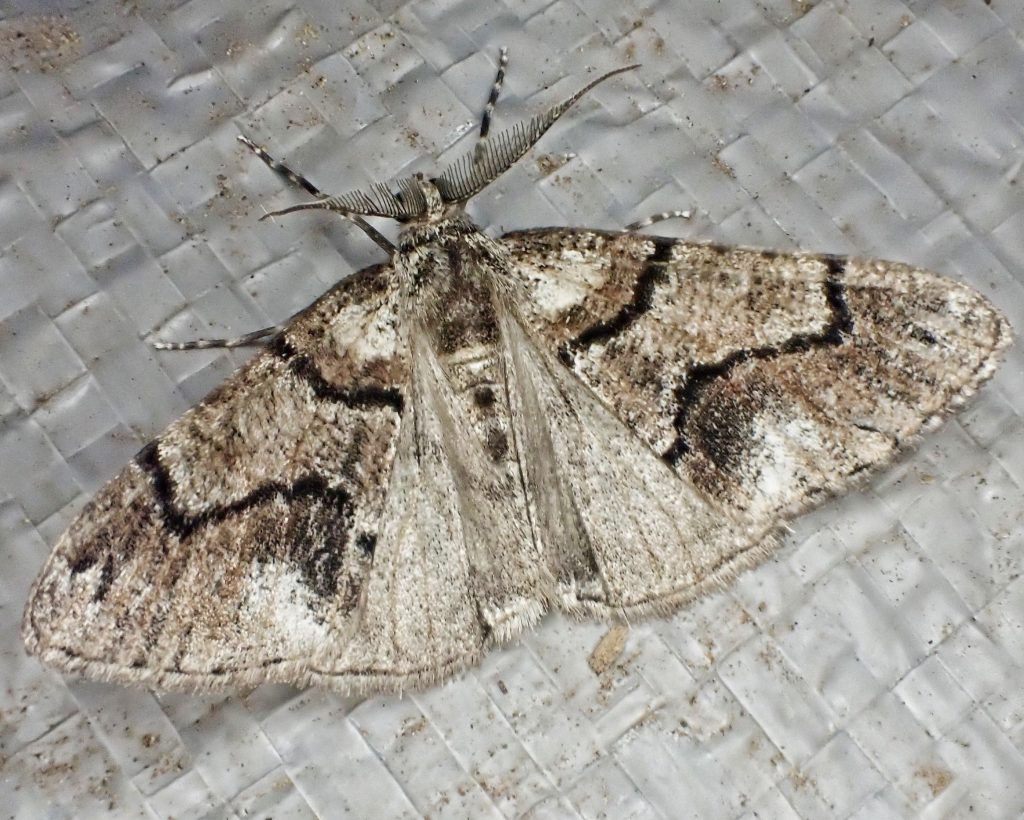
Habitat-Forests and woodlands containing conifers.
Range-Western North America; region wide in appropriate habitat.
Eats-Larvae feed on the needles of a variety of members of Pinaceae, including Douglas-fir, Western and Mountain Hemlock, Ponderosa, Lodgepole, and Western White pines, Grand, Silver, and Subalpine fir, Engelmann Spruce, and have also be found on Western Red Cedar.
Eaten by-Gleaning birds like nuthatches, chickadees, kinglets, wrens, Brown Creepers, etc. capture many caterpillars, and adults and caterpillars are probably preyed upon by insectivores of all classes.
Adults active– Mid July to mid-September
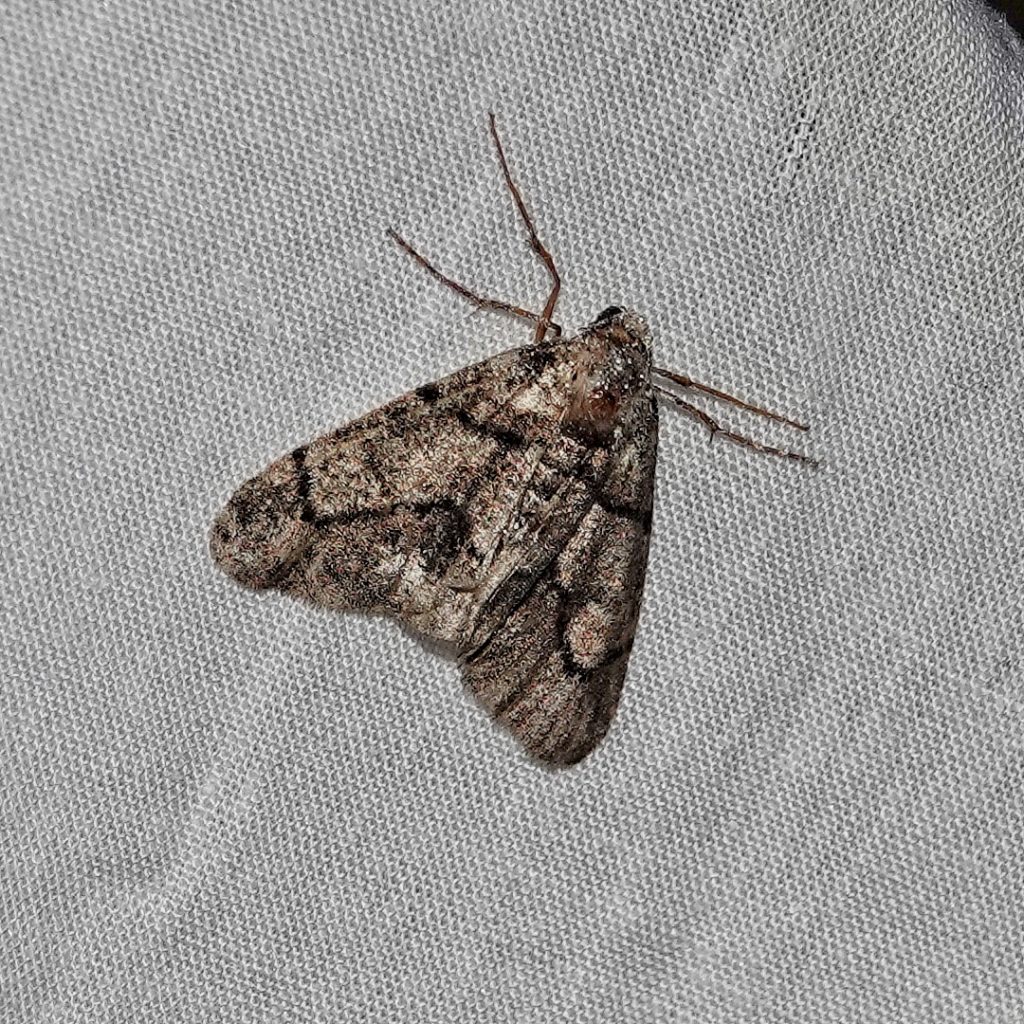
Life cycle– Univoltine; overwinter as eggs in diapause, larvae hatch in mid-spring, pupate in cocoons on twigs in mid-summer; pupation lasts about 26 days; adults die in the fall.
Etymology of names– Gabriola is from the location where the type specimen was found, Gabriola Island, BC. The specific epithet dyari honors HG Dyar Jr (1866-1929), an entomologist working for the USDA who was responsible for describing dozens of new species of lepidoptera.
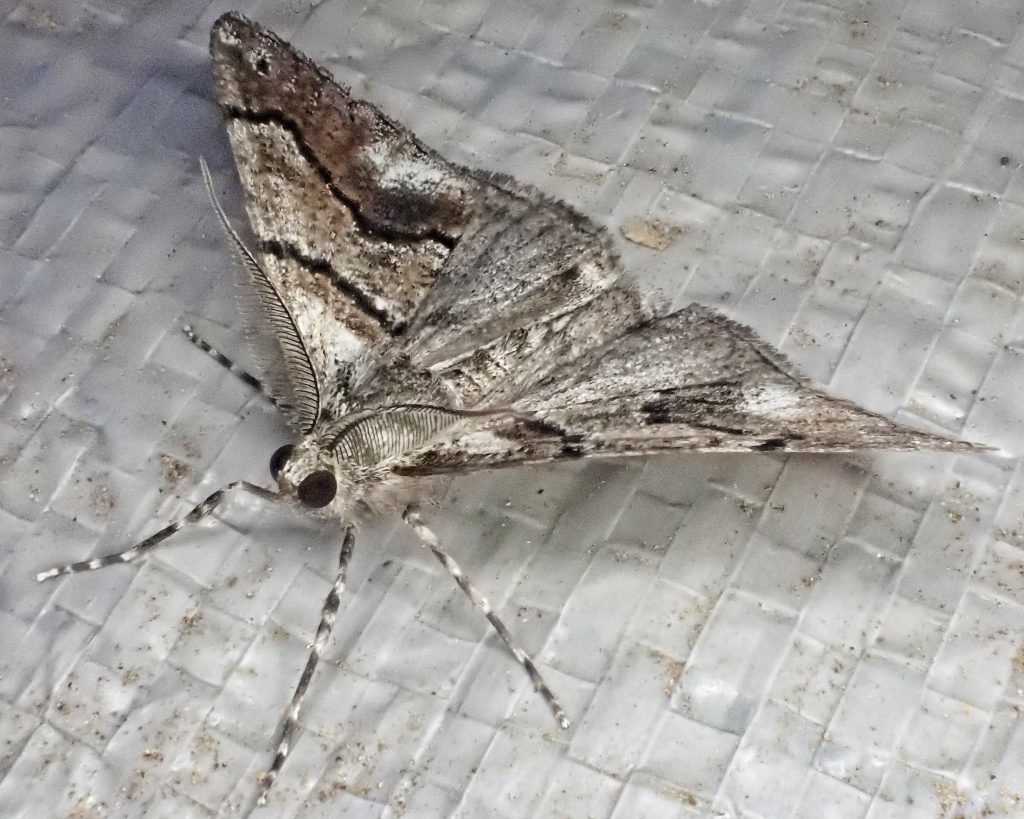
Species Gabriola dyari – Dyar’s Looper – Hodges#6781 – BugGuide.Net
Moth Photographers Group – Gabriola dyari – 6781
NOTE ON GABRIOLA DYARI, TAYLOR. | The Canadian Entomologist | Cambridge Core
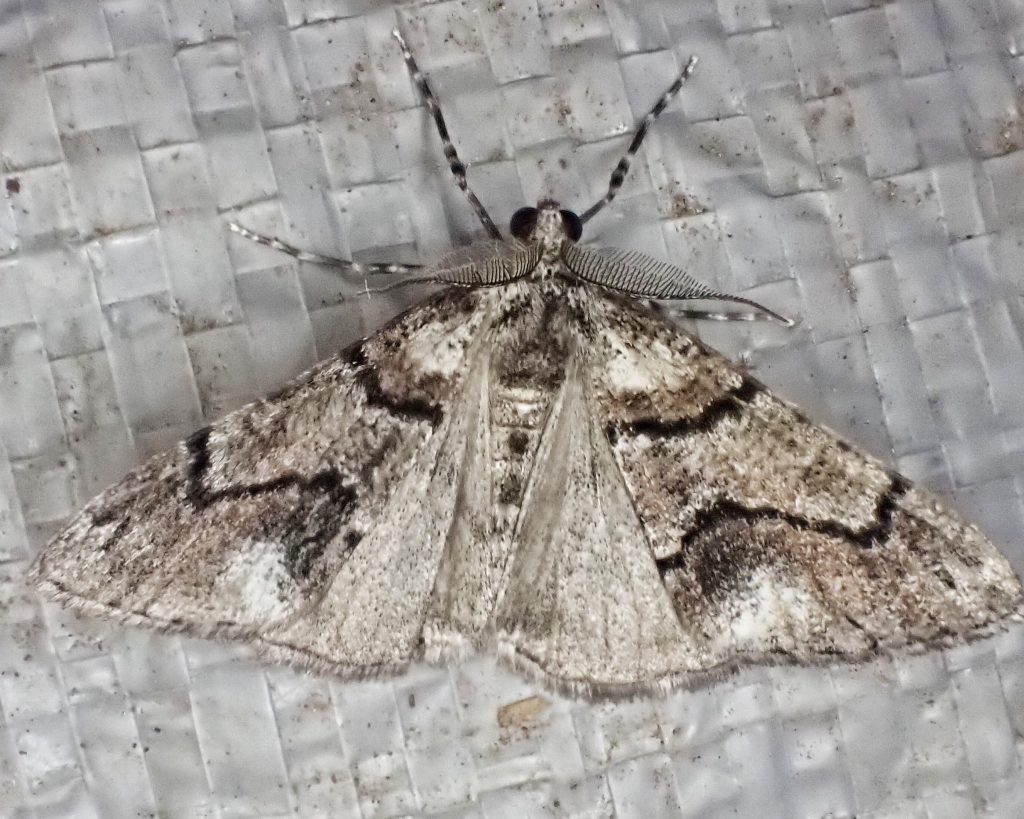
2 thoughts on “Gabriola dyari (Dyar’s Looper)”